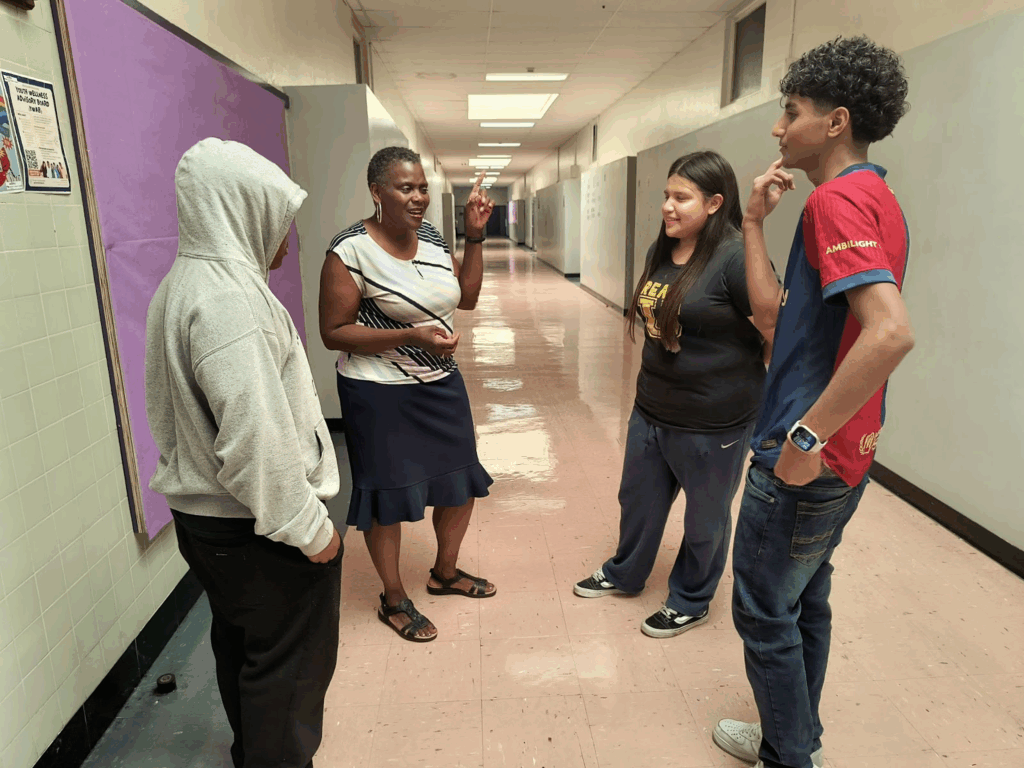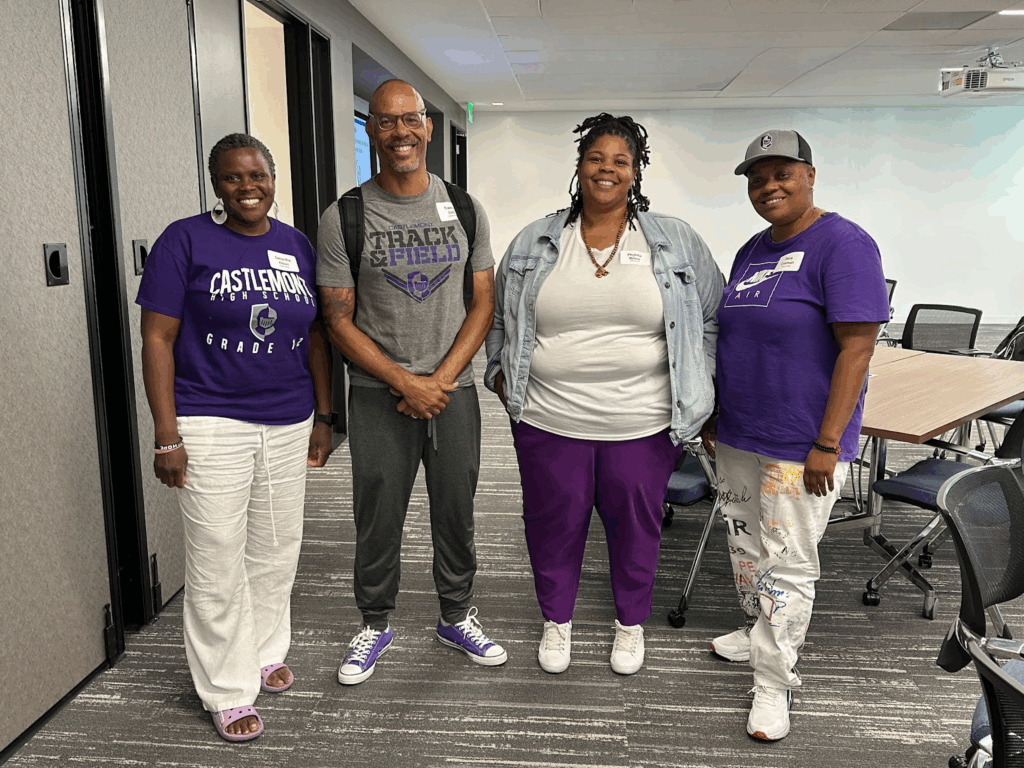September 26, 2025
by Amanda Meyer, Senior Director of Improvement, CORE Districts
For over 90 years, Castlemont High School has been a pillar of its East Oakland community, cultivating a deep culture of care for students through many eras of change. Today, Castlemont stands out within the CORE Districts’ Breakthrough Success Community (BTSC), a 45-school improvement network focused on increasing 9th grade success as a path to greater postsecondary opportunity.
Across the network, BTSC schools are seeing strong gains: 9th grade on-track rates among participating sites have increased by an average of 17% since before the pandemic. The percentage of 9th graders saying they feel known and cared for by adults has risen from 76% in 2023 to 82% today.
Castlemont’s progress stems from their intentional work across several key drivers of 9th grade success: teaming, high school transition, student-adult relationships, and grading practices. At the outset of their participation in BTSC, Castlemont’s 9th grade team had few common practices in place to support students. As they learned about on-track strategy, they began to operationalize their long-standing culture of care into defined routines the team could use to systematically support the students that need it most.
Castlemont already had a weekly 9th grade team meeting during a common prep, but their work in BTSC helped them reimagine how that time might be spent. Guided by Assistant Principal Samantha Odom, the team built a shared purpose around student success, enabling teachers to identify strategic segments of students to intervene with based on grades, attendance, and survey data. Rather than unstructured sharing, their student-centered data protocols help them move systematically through students they are worried about, collaboratively identifying needs and assigning action steps to owners – ensuring no students fall through the cracks.

Traivon Soto Johnson, physical education teacher and enthusiastic champion of student-adult relationships, uses survey data to identify students least connected to school. He then facilitates his colleagues to run 2×10 (“two by ten”) cycles where they each intentionally connect with a focal student for two minutes a day over ten consecutive days to build a relationship. Teachers share insights about students and coordinate efforts to ensure every student has a caring adult.
English teacher Daisy Coleman led shifts in grading practices to make grades better serve as feedback for students and teachers. Near the end of each marking period, teachers now conduct a Gradebook Review to surface where students are struggling in their classes, followed by a Make-Up Day to provide supportive class time to finish high-leverage assignments. This routine has reduced Ds and Fs, with the added benefits of keeping gradebooks better up-to-date and giving parents more accurate information about their child’s progress. The team also conducted a Gradebook Settings Audit for teachers to examine one another’s categories, weighting, and assignment types, leading to greater alignment between teachers. Through their work in the BTSC, Castlemont has built a trusting team culture that supports vulnerability, reflection, and collaborative problem-solving in service of students.
Thinking further upstream, Counselor Phylisha Nelson tackled historically low Summer Bridge participation by co-designing a 3-day, teacher-led experience in collaboration with the site’s after school program. She used BTSC tools to coordinate personal invitations to students who struggled academically in middle school. In two years, the program has helped nearly 100 rising 9th graders build friendships and connect with school before classes start.

By turning care for students into concrete and repeatable routines throughout the school year, Castlemont has produced the largest improvements of the five Oakland schools in BTSC. Most notably, the end-of-year on-track rate has increased by 42% compared to before the pandemic. Gains span all student groups at Castlemont, including 4 consecutive years of rising on-track rates for Black students. A key factor in this improvement is that Ds and Fs in 9th grade have been cut in half since 2021.
“The support and coaching provided by BTSC have proven invaluable in strengthening my leadership and empowering our 9th grade team,” explained Assistant Principal Odom. “Our 9th grade team has become one of the most effective on campus—and we’re proud to see our results improve year after year.”
Castlemont transformed the 9th grade experience by building trust among adults, establishing common routines, and making vulnerable students feel seen and believed in. Approximately 200 9th graders enter Castlemont each year, and the school’s focus on 9th grade success has changed hundreds of life trajectories… and counting!
CORE Districts, which facilitates the BTSC, is one of the twelve organizing partners of the GRAD Partnership. By working in collaboration with all the GRAD Partnership organizations, CORE looks forward to bringing the kinds of wins seen at Castlemont to more schools and districts nationwide.